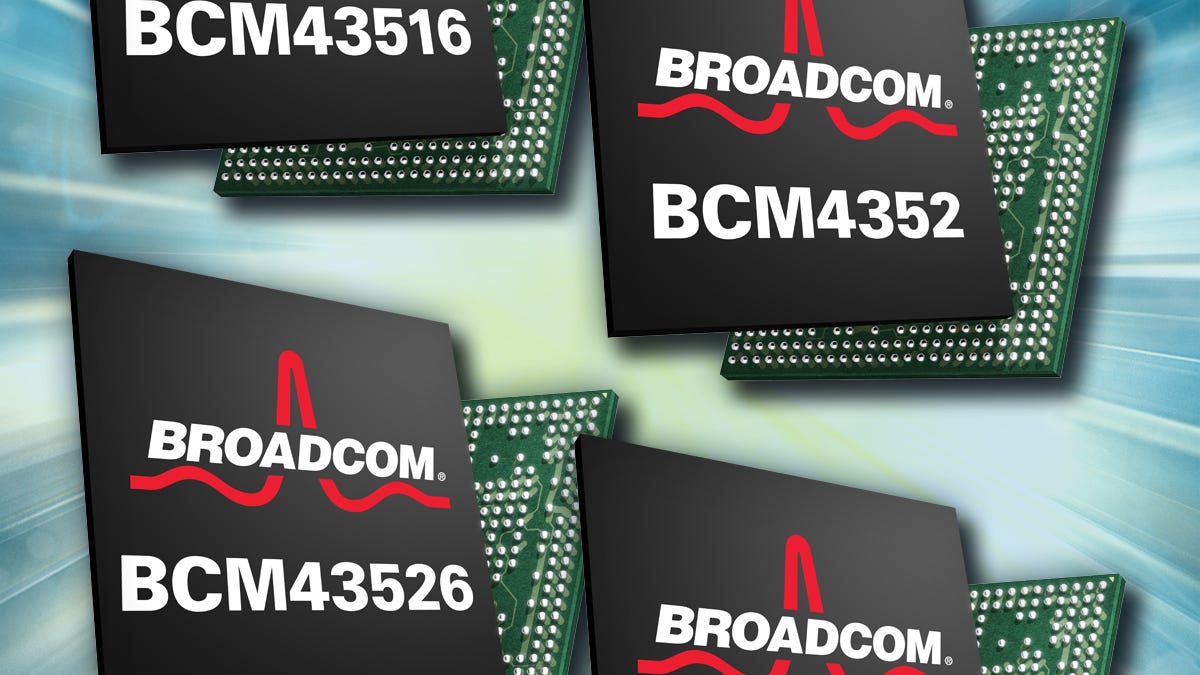Broadcom 802.11ac Wi-Fi chips hit CES 2012
Broadcom announces four new 802.11ac chips that will be demoed at CES 2012.
Following a CES preview event last month, Broadcom today announced its first family of 802.11ac (also known as 5G Wi-Fi) chips, designed for a broad range of product segments.
The chipmaker says the new IEEE 802.11ac chips are three times faster and up to six times more efficient than equivalent existing 802.11n (known as Wi-Fi) solutions. This makes 5G Wi-Fi a major step up from the existing and popular 802.11a/b/g/n wireless solutions.
According to Broadcom, its 5G Wi-Fi chips will dramatically improve wireless range and data rates, allowing consumers to watch HD video, and transfer large amounts of data to and from more devices, in more places at once.
The fact that the chips make it possible to transmit a much larger amount of data than 802.11n devices in the same amount of time means that 5G Wi-Fi devices can enter low-power mode faster and more frequently, resulting in significant reductions in power consumption.
Broadcom's new family of 5G Wi-Fi chips consists of the BCM4360, BCM4352, BCM43526, and BCM43516. These chips share a number of common features, including:
- Support for 80MHz channel bandwidth that is twice as wide as current 802.11n solutions.
- A higher modulation scheme that increases data transfer efficiency.
- Support for standardized Beam-Forming technology that helps increase wireless range, penetration, and data rates.
- Support for Low Density Parity Check Codes (LDPC) and Space-Time Block Codes (STBC).
These chips, however, differ from one another in their performance tiers and interfaces. The BCM4360 is the top tier that supports the PCIe interface and implements three-stream 802.11ac specifications, offering speeds up to 1.3Gbps. The BCM4352 and BCM43526 implement two-stream 802.11ac specifications to reach up to 867Mbps, and support PCIe and USB interfaces, respectively. And finally, the BCM43516 chip also supports USB interfaces, but with the single-stream 802.11ac implementation, it reaches speeds of up to 433Mbps.
Broadcom says that chips with the PCIe interface are designed for access points, routers, DSL/cable gateways, and PC products; chips that use USB are ideal for consumer electronics devices, such as televisions, set-top boxes, and Blu-ray players.
Per the 802.11ac specification, all of these new 5G Wi-Fi chips work with all legacy 802.11 standards and complement other wireless technologies, including Wi-Fi Direct, Bluetooth, and NFC.
Broadcom says that it's currently sampling 5G Wi-Fi solutions to OEM manufacturers and will be demonstrating 5G Wi-Fi capabilities at CES 2012. According to the company, consumers can expect to purchase 5G Wi-Fi-based products by the second part of the year.


